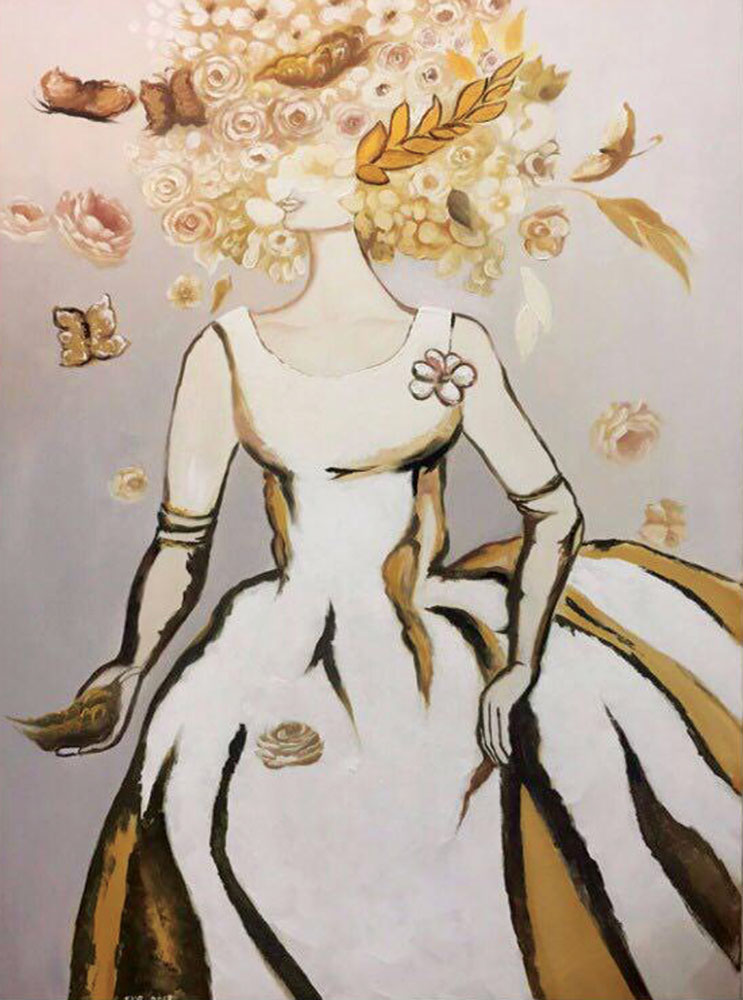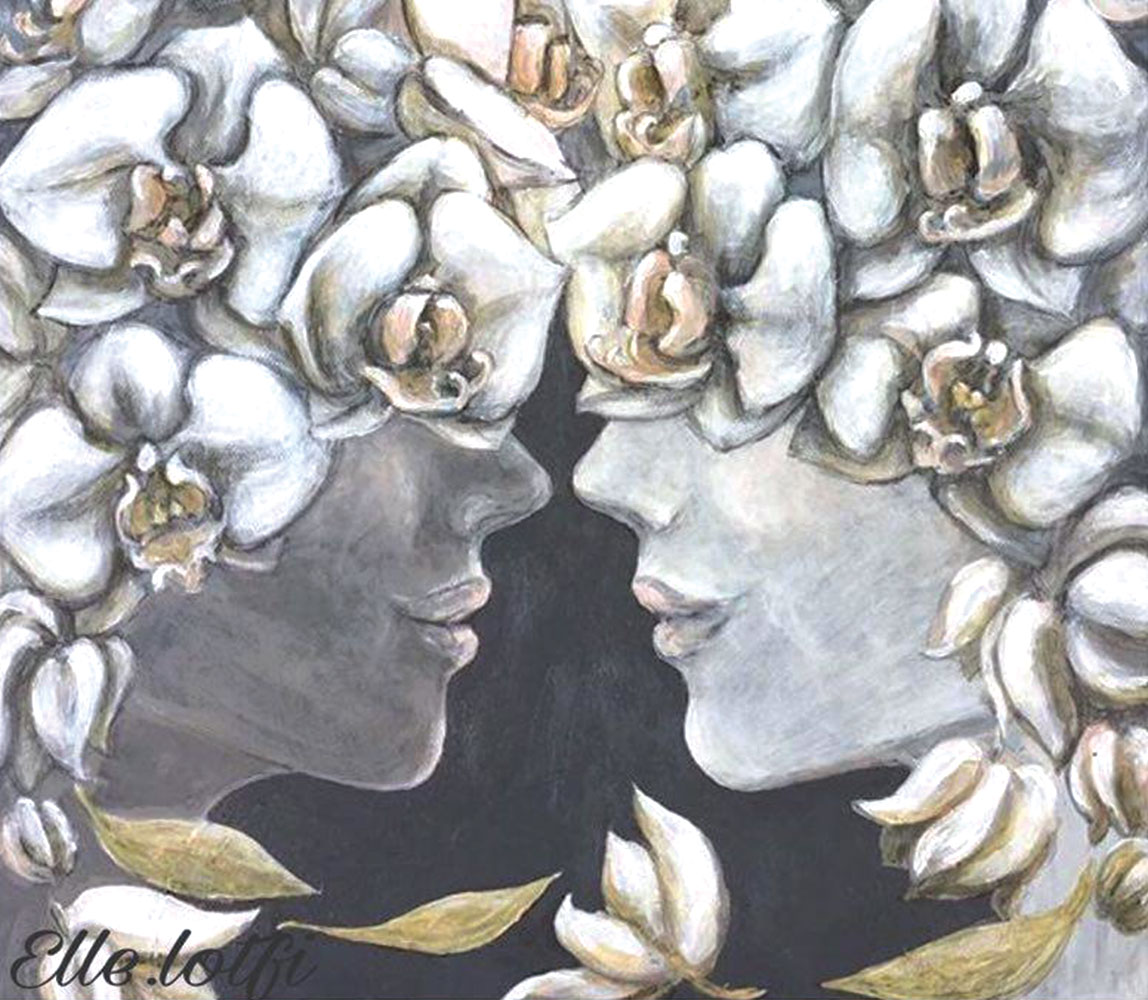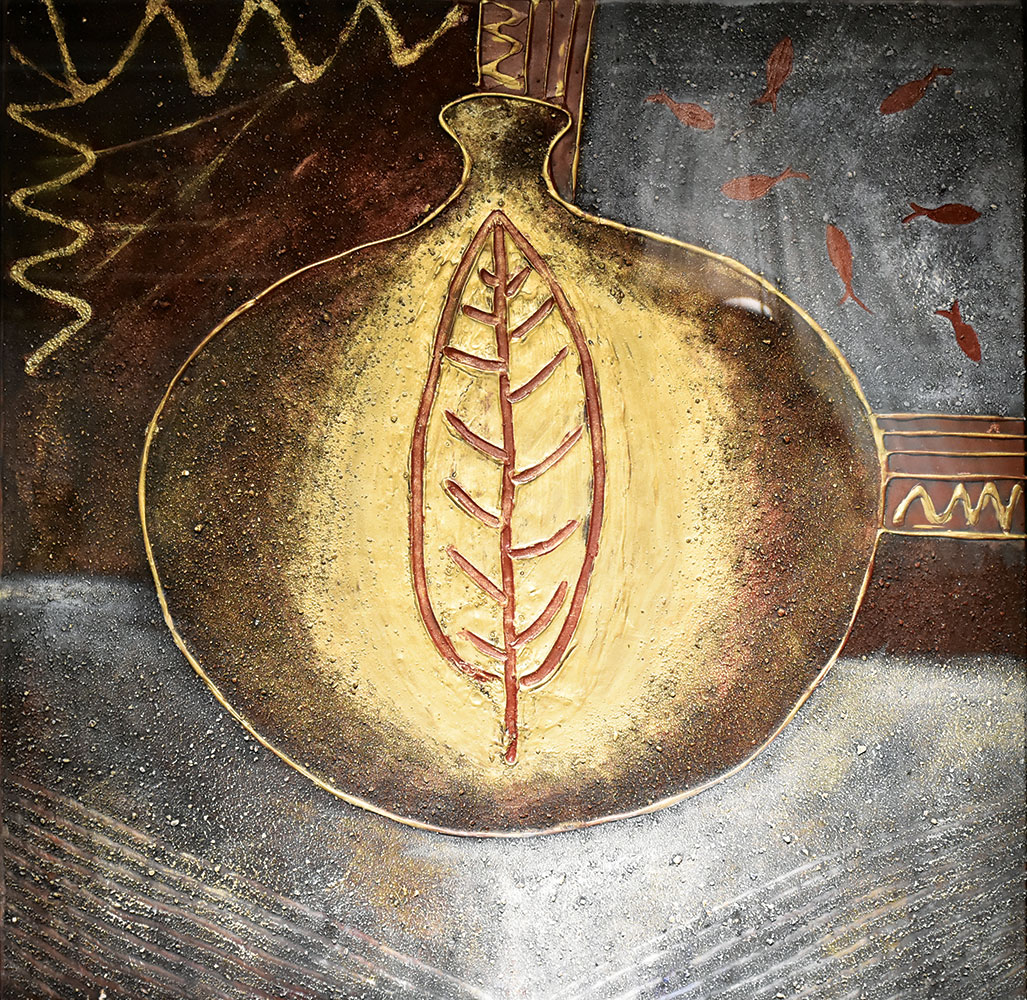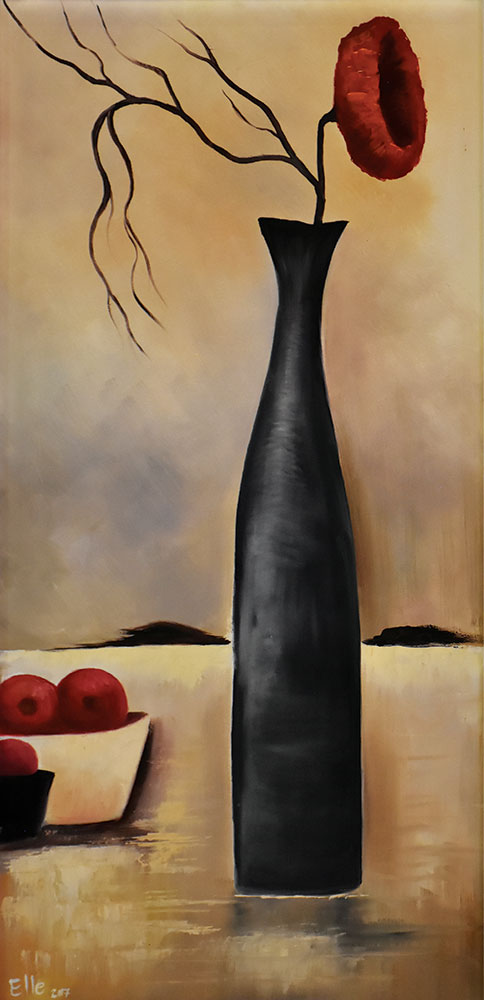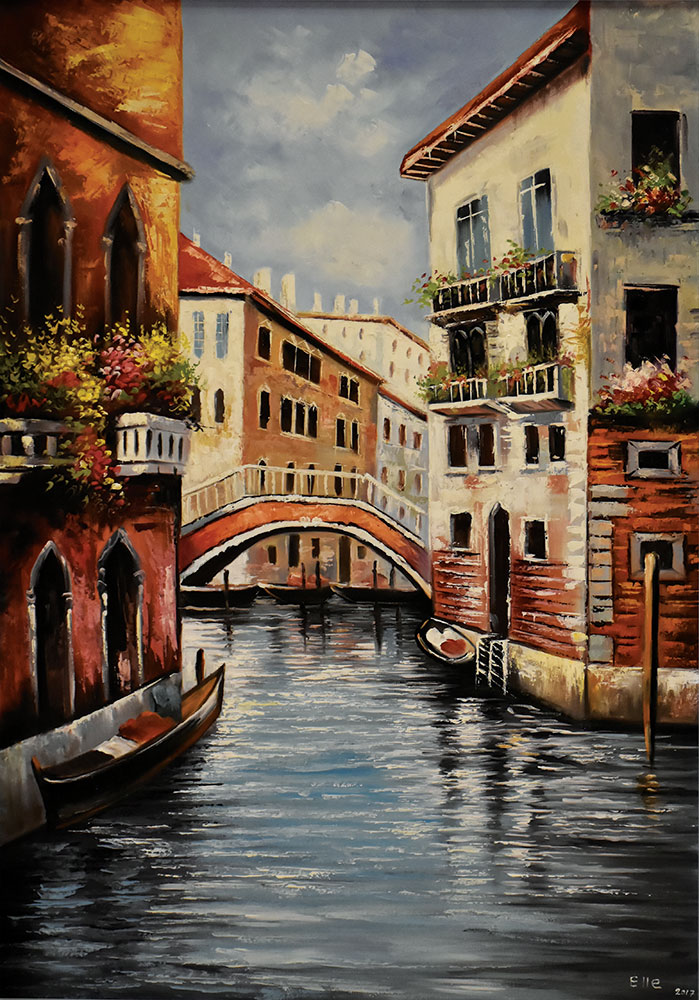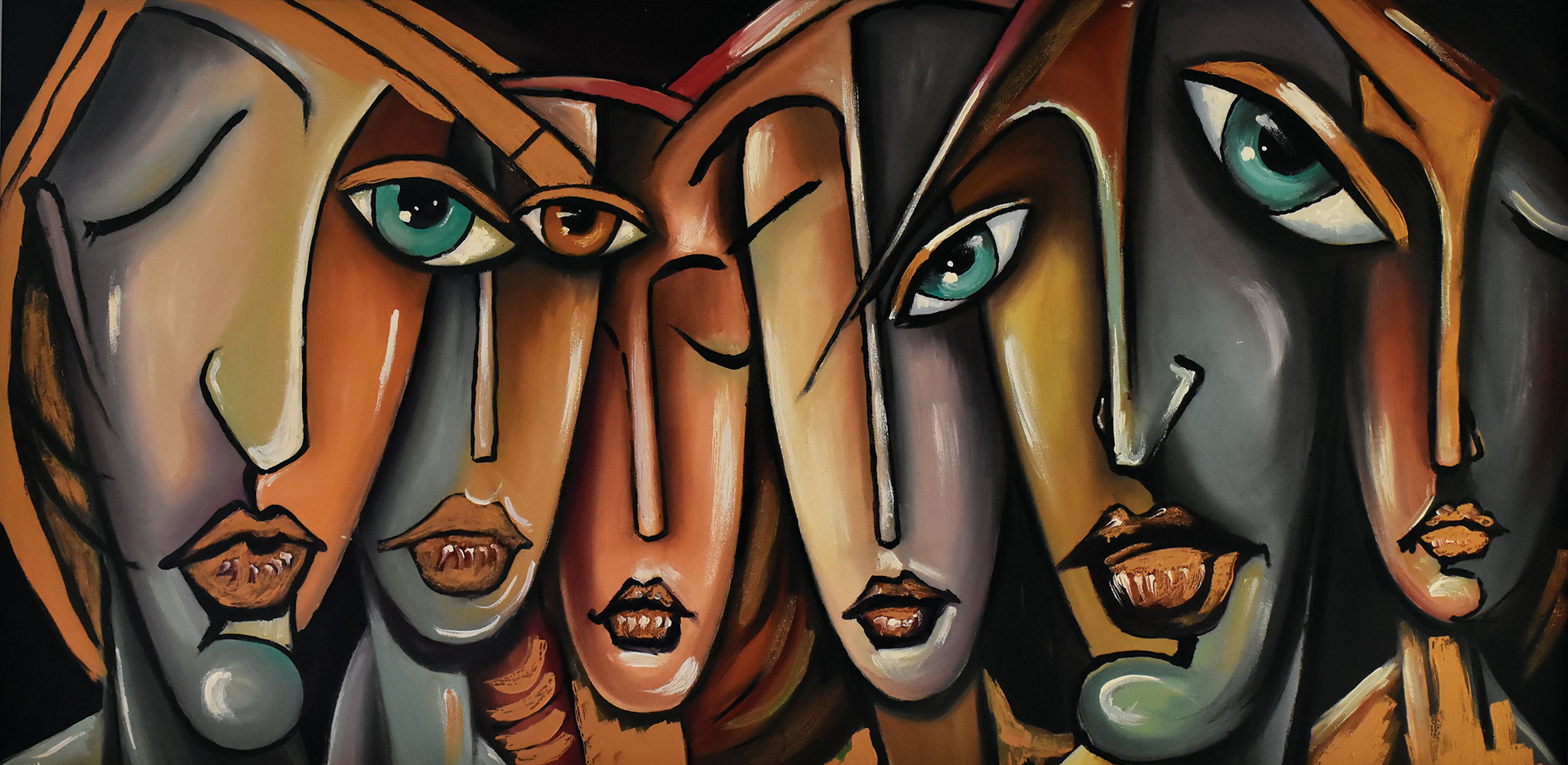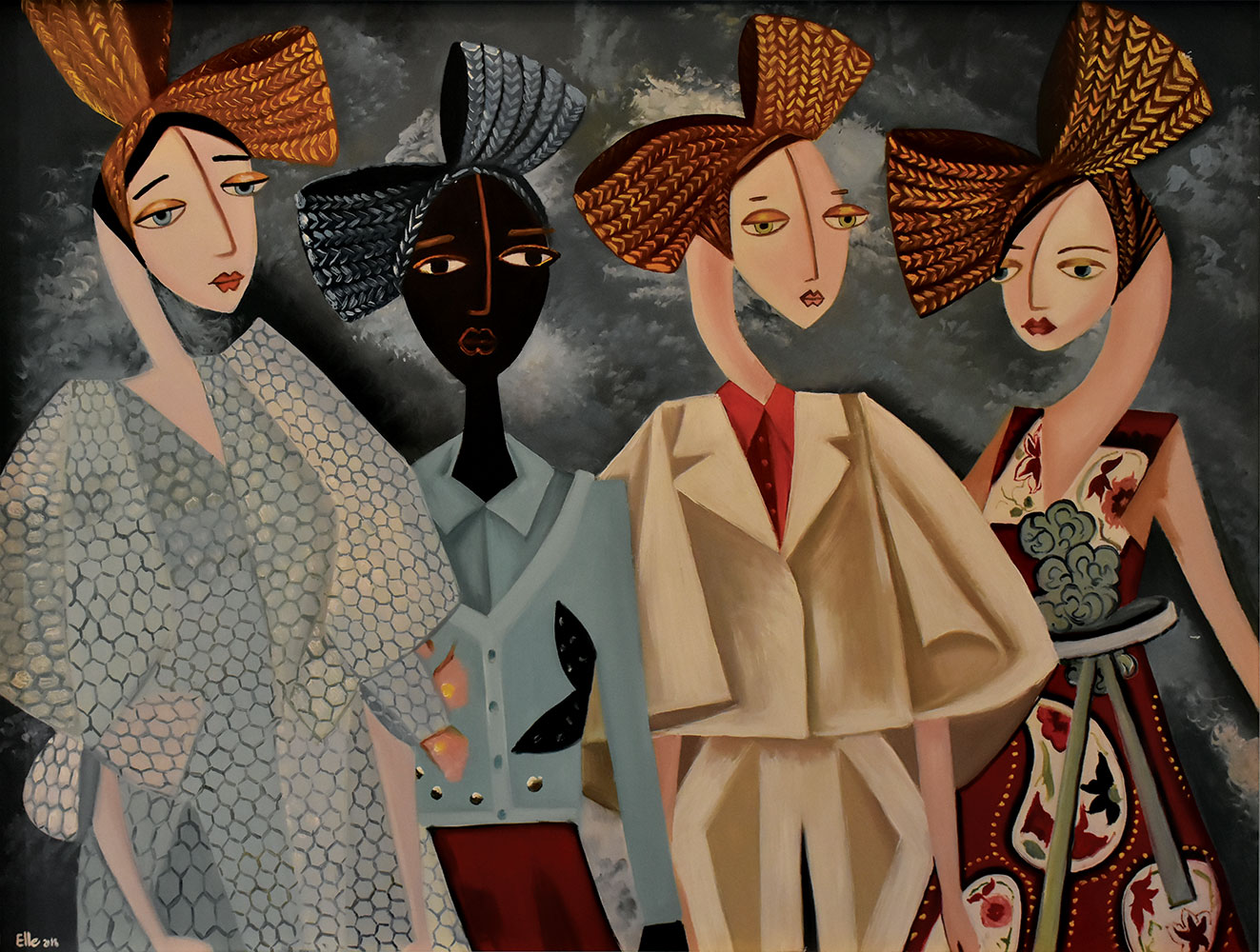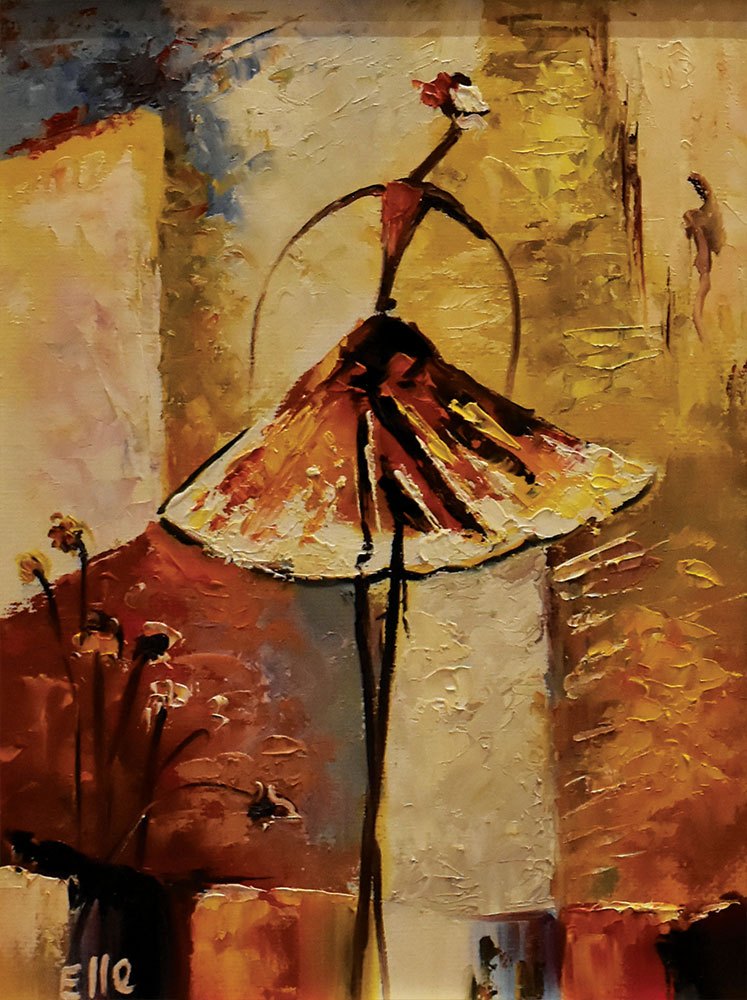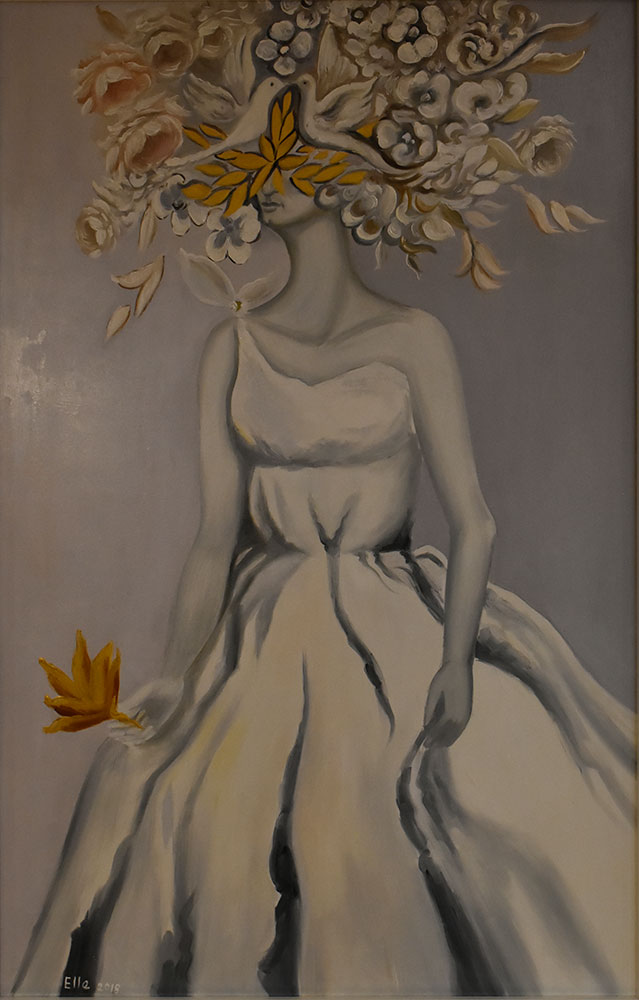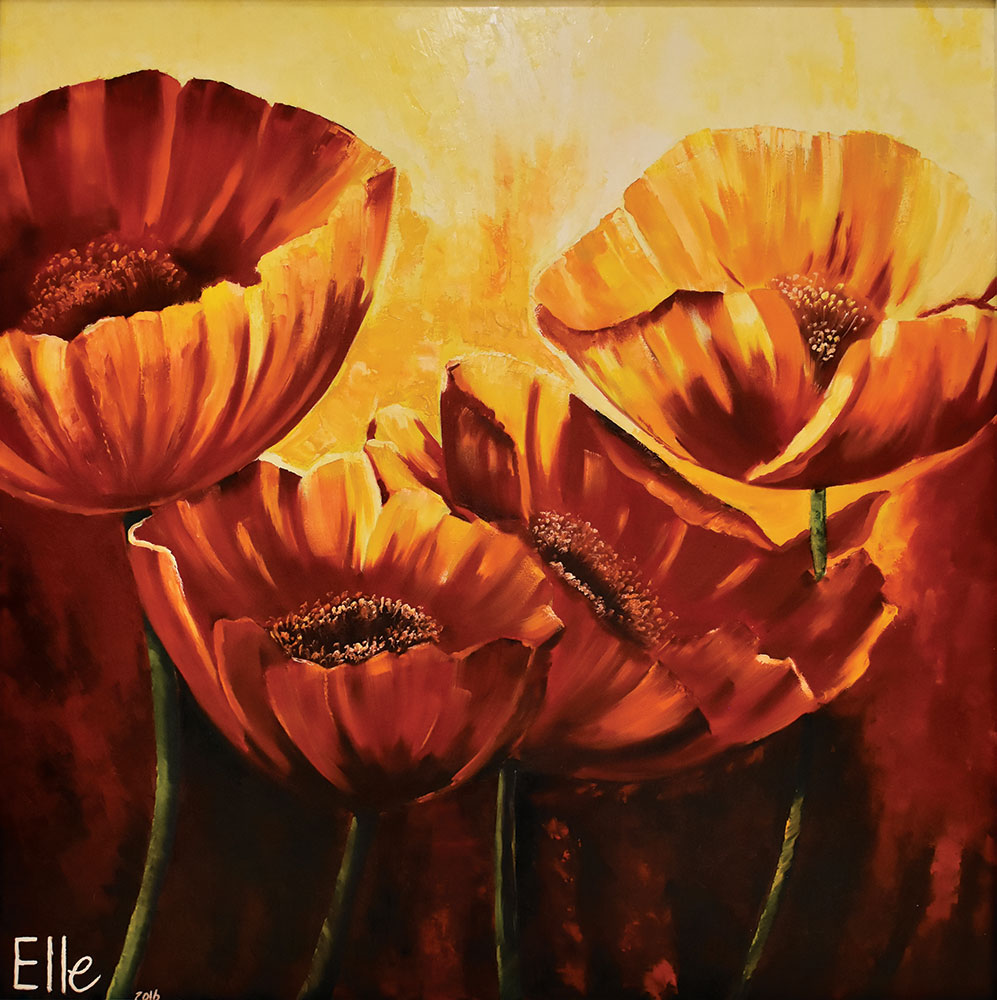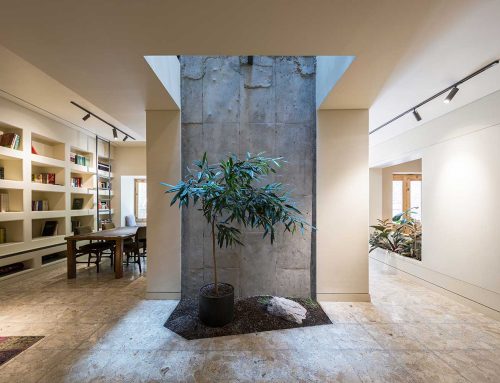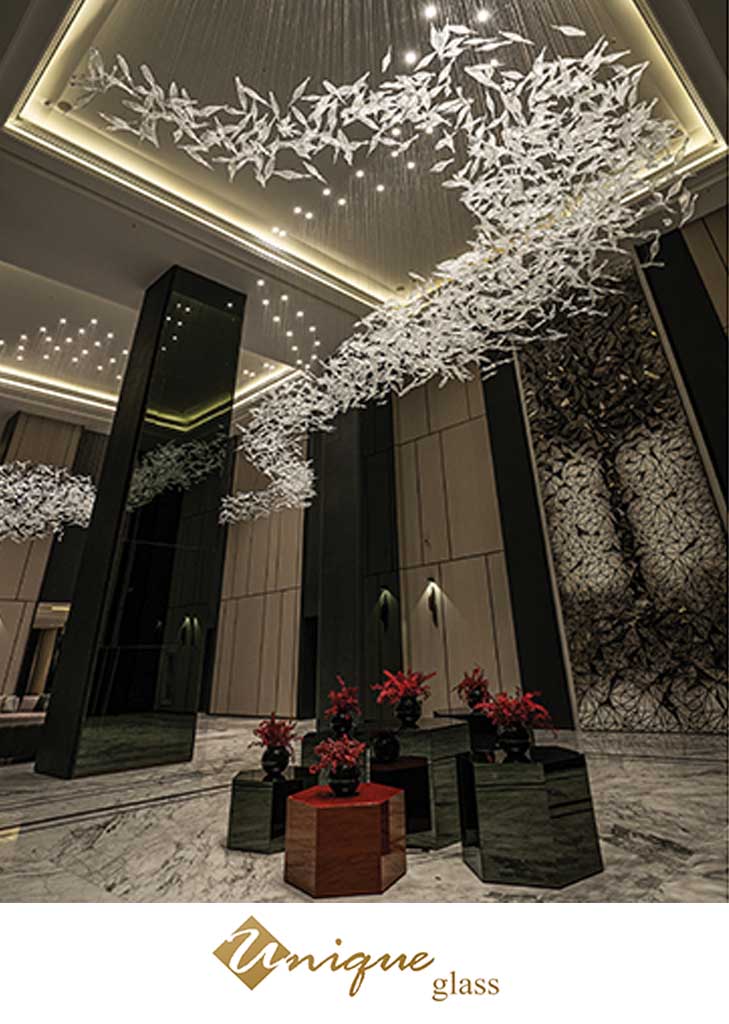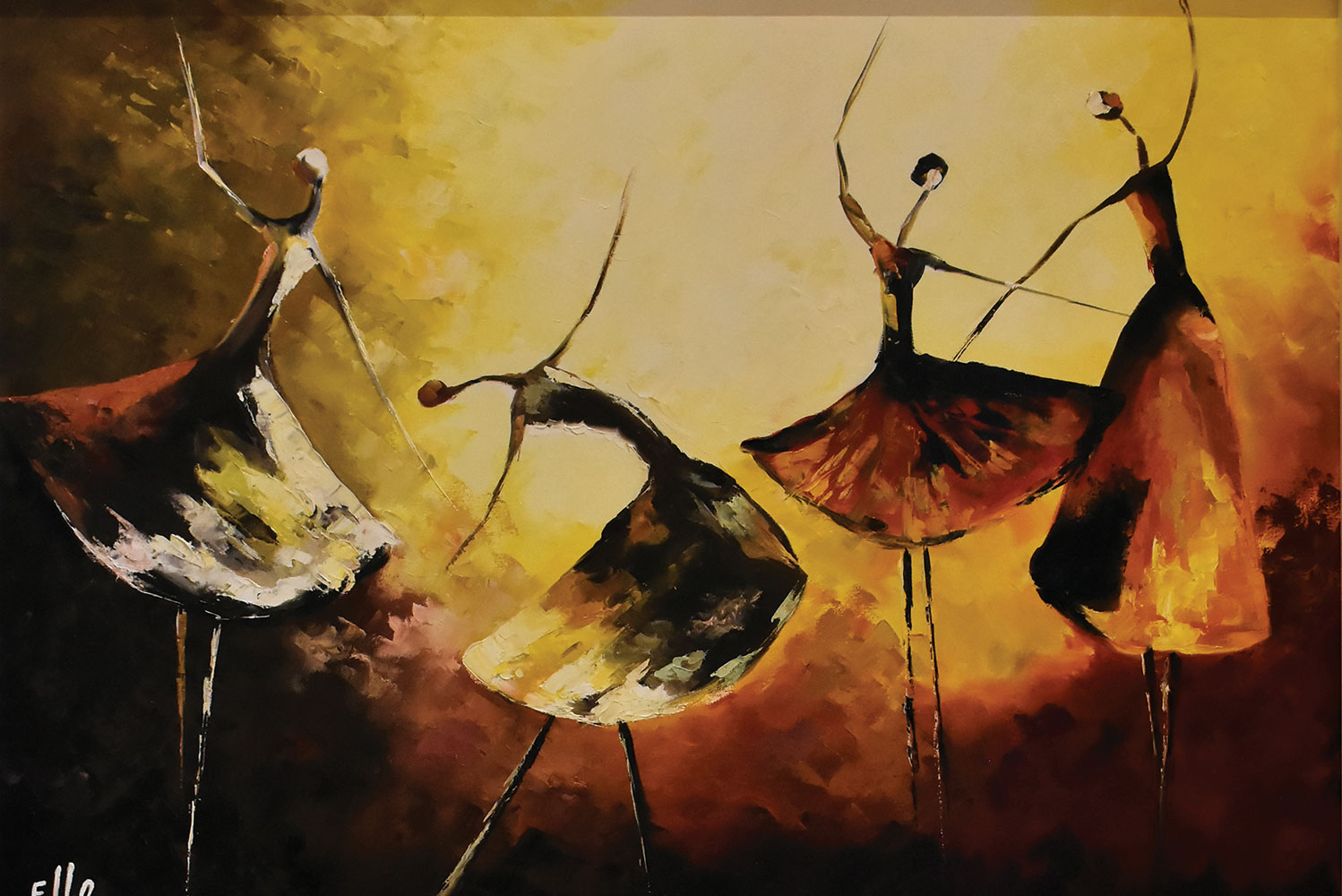
نقاشی های الهام لطفی
الهام لطفی، متولد تهران و کارشناس ارشد معمارى از دانشگاه آزاد اسلامی واحد تهران مرکز است. عمدهی مطالعات او در زمینهی لنداسکیپ معماری است. او در مجموعهی هارمونیک سنتر مشاور معمارى، طراحى داخلى، مبلمان و فضاسازى است. در نقاشیهایش سعی در القاء روح موثر بر مخاطب و ببینده دارد. آثارش جستجو براى الهام، جشن زندگى و نقاشى از روى قلب و احساس است. زن در نقاشیهای وی با سرهايى که با گل شکوفه میکنند، نشانی از جشن عارفانهی زنان است.
وی در مورد آثارش چنین بیان میکند: «انسانها را نقاشى نمیکنم، بلکه احساسات آنها را نقاشى و رنگ میکنم. تعریف من از روحيه و احساسات زن (بانو)، راهى طبيعى براى بيان خود و ارتباط با جهان است. من اين چشمانداز را (flower head) مینامم. کسانی که با انرژى فراوان، ايدهها و احساسات شکوفا میشوند، چشمانشان بسته است، طوری که آنها میتوانند به سمت درون، به قلبهايشان نگاه کنند. من معتقدم که پاسخ سوالات زندگانیمان در درون ماست و هنگامى که پيدا شد به ما کمک میکند تا معناى واقعى زندگى را کشف کنيم و در درخشانترين نور، روشن شويم. من هميشه احساس قوى بودن زنانه داشتهام، که از آن به عنوان انرژى زنانه یاد میکنم. انرژى زنانه را به عنوان ظريف (گيرنده و پاسخگو) توصيف میکنم. نوعى از انرژى که قدرتمند است تا زندگى و جهان را تغيير دهد. روزهايى که انرژى و احساس بانوانه را بيشتر و بيشتر از قبل در جهان میبينيم، جنبشى درخشان از فرهنگ جنگجوى زنانه بيدار است. بانوانى که با شاخهی زيتونهاى در سر آويخته، مسيرى را براى نسلهاى آينده روشن میکنند، که الهام بخش هر روز من است.
شاخهی زيتون، سنبل صلح، پيروزى و دوستى است که آداب و رسوم يونان باستان را نشان میدهد و بيشتر در فرهنگ حوزهی درياى مديترانه يافت میشود. تاريخچهی شاخهی زيتون در يونان و روم، در اساطير يونانى آتنا با پوزيدون، خداى دريا براى در اختيار داشتن آتن به رقابت پرداختند. پوزيدون با پرتاب نيزهی سه شاخه خود به آکروپليس که آب دريا از آن فوران کرد، ادعاى در اختيار گرفتن آن را نمود، ولى آتنا با کاشت درخت زيتون براى اولين بار خوبى را به کار برد و صلح و دوستى را پيشنهاد کرد. دادگاه خدايان و الهه تشکيل شد و آنها آتنا را برگزيدند، به آتنا حکم دادند و او را انتخاب کردند، به اين دليل که او هديهاى زيبا به زمين داده بود. هم اکنون تاج گلهاى زيتون بر سر عروسها گذارده میشود و به برندگان المپيک این تاج هديه داده میشود.
PAINTING, Elham Lotfi
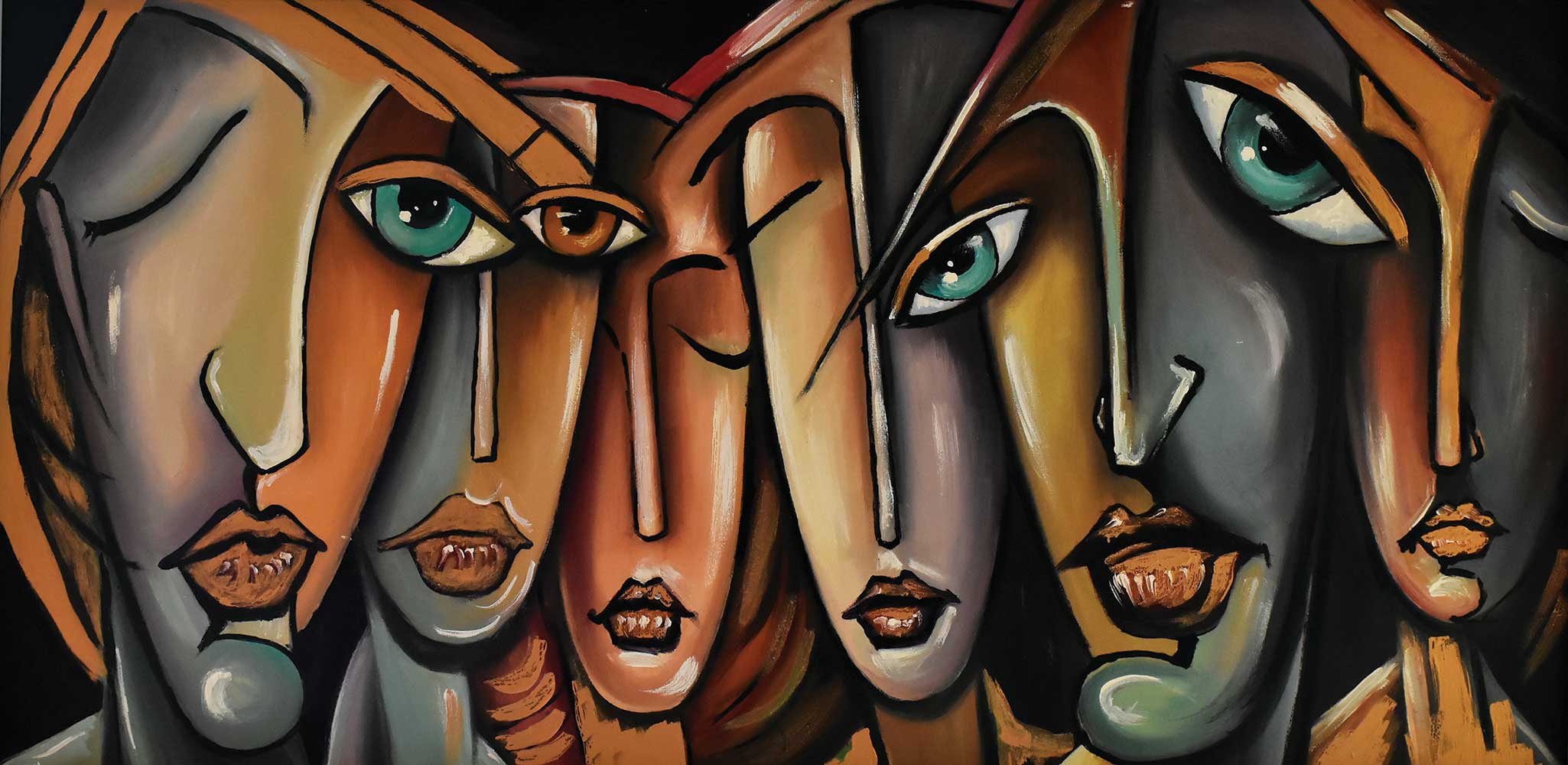
Elham Lotfi, she was born in Tehran and graduated a master of architecture from the Islamic Azad University of Tehran Branch. Most of her studies are in Landscape Architecture. She is a consultant in Architecture, Interior Design, Furniture, and landscape at Harmony Center. In her paintings, she tries to instill an affecting spirit on the audience and the viewer. Her works are a search for inspiration, a celebration of life, and a painting of the heart and emotion. The woman in her paintings with the headdresses blooming indicates the mystical celebration of women.
“I do not paint people, but I paint and color their emotions,” She says about her works. My definition of a woman’s spirit and emotions is a natural way of expressing herself and communicating with the world. I call this vision (flower head). Those who flourish with a great deal of energy, ideas, and emotions have their eyes closed so they can look inside of their hearts. I believe that the answers to our living questions are within us, and when it found, it will help us discover the true meaning of life and shine in the brightest light. I’ve always had a strong sense of femininity, which I refer to as feminine energy. I describe feminine energy as subtle (recipient and responsive). A kind of energy that is powerful enough to change lives and the world. The days when we see more and more of the energy and emotion of the feminine in the world than ever before, a brilliant movement is awakened by the female Fighting culture. The women with the olive branch on their head illuminate a path for future generations that inspires me every day.
The olive branch is the sparkle of peace, triumph, and friendship that reflects ancient Greek customs and is most commonly found in Mediterranean culture. The History of the Olive Branch in Greece and Rome In Greek mythology Athena competed with Poseidon, the god of the sea, for the possession of Athens. Poseidon claimed to possess it by throwing his three-pointed spear at the Acropolis, but Athena made good use of the olive tree for the first time and offered peace and friendship. The court of the gods and goddesses was formed, and they chose Athena, gave Athena a ruling, and chose her because she had given a beautiful gift to the earth. The wreath of olive flowers is now placed on the brides and given to the Olympic winners.





